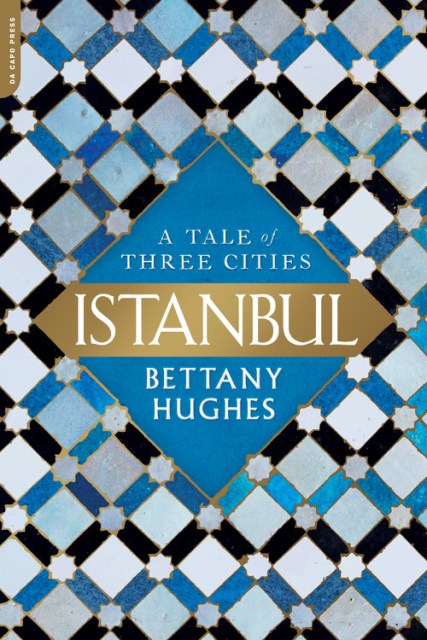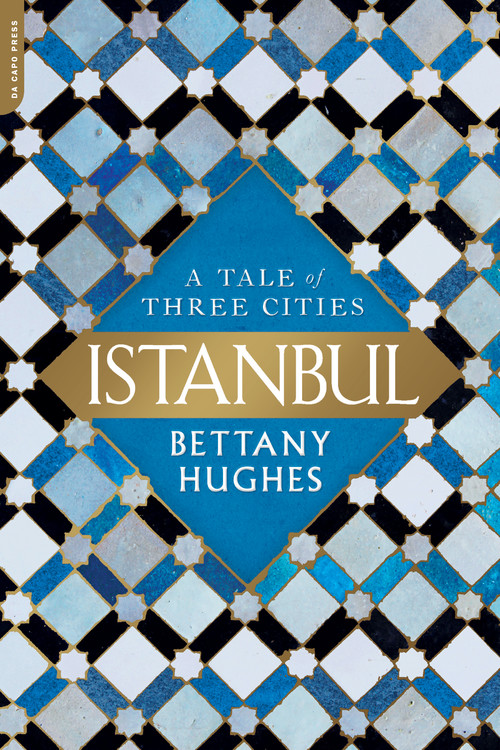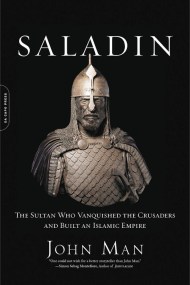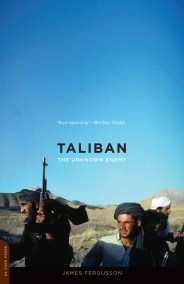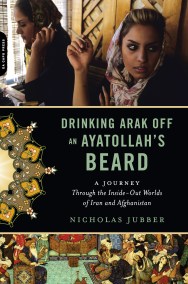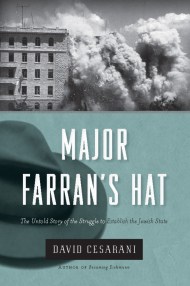By clicking “Accept,” you agree to the use of cookies and similar technologies on your device as set forth in our Cookie Policy and our Privacy Policy. Please note that certain cookies are essential for this website to function properly and do not require user consent to be deployed.
Istanbul
A Tale of Three Cities
Contributors
Formats and Prices
Price
$35.99Price
$45.99 CADFormat
Format:
- Trade Paperback $35.99 $45.99 CAD
- ebook $13.99 $17.99 CAD
- Audiobook Download (Unabridged)
This item is a preorder. Your payment method will be charged immediately, and the product is expected to ship on or around March 5, 2019. This date is subject to change due to shipping delays beyond our control.
Also available from:
From the Koran to Shakespeare, this city with three names–Byzantium, Constantinople, Istanbul — resonates as an idea and a place, real and imagined. Standing as the gateway between East and West, North and South, it has been the capital city of the Roman, Byzantine, and Ottoman Empires. For much of its history it was the very center of the world, known simply as “The City,” but, as Bettany Hughes reveals, Istanbul is not just a city, but a global story.
In this epic new biography, Hughes takes us on a dazzling historical journey from the Neolithic to the present, through the many incarnations of one of the world’s greatest cities–exploring the ways that Istanbul’s influence has spun out to shape the wider world. Hughes investigates what it takes to make a city and tells the story not just of emperors, viziers, caliphs, and sultans, but of the poor and the voiceless, of the women and men whose aspirations and dreams have continuously reinvented Istanbul.
Written with energy and animation, award-winning historian Bettany Hughes deftly guides readers through Istanbul’s rich layers of history. Based on meticulous research and new archaeological evidence, this captivating portrait of the momentous life of Istanbul is visceral, immediate, and authoritative — narrative history at its finest.
-
"Groundbreaking...a colossal undertaking...a notable achievement"--Roger Crowley, bestselling author of 1453
-
"Impressive. In Istanbul, Hughes plays intriguing, sophisticated games with time and space.... By making unlikely connections between well-described locations and events separated by eons, she gives voice to those witchy, diachronic feelings in a spectacular fashion."--The Economist
-
"Richly entertaining and impeccably researched. Hughes's ebullient book is an ode to three incarnations of the city."--Peter Frankopan, author of the international bestseller The Silk Roads
-
"Brimming with brio and incident...life-filled and life-affirming history, steeped in romance and written with verve"--Justin Marozzi, award-winning author of Baghdad
-
"Mesmerizing... Weaves research and insight with understanding and love: here is a book written as much with the heart as the mind."--Elif Shafak, award-winning author of The Bastard of Istanbul
-
"Shows readers how a prehistoric settlement evolved through the centuries into a great metropolis, the crossroads where East meets West."New York Times Book Review (Editors' Choice)
-
"Curiously gripping...[Hughes] establishes just how deep the Greek roots of the settlement called Byzantion went...She has a fine feel for the complexities and shadings of that distant past...Hughes's tone is both scholarly and rich in visual detail...Show[s] how intricate and improbable Istanbul's history has been."New York Times Book Review
-
"[A] marvelous new book...[by] one of Britain's most successful television historians...[An] ambitious enterprise...Vivid and readable prose...[A] wonderful evocation of Istanbul's glittering past."Wall Street Journal
-
"Hughes is not an argumentative historian. She avoids the debates of academe. She is a wistful and impassioned cosmopolitan who has produced a challenging story."Financial Times
-
"A deeply researched biography of a legendary city...A panoramic cultural history of a fascinating place."Kirkus Reviews
-
"Packs the story of its three iterations-Byzantium, Constantinople and Istanbul-into one volume, from its earliest settlement in 6000 BC, to the 20th century. Though it sweeps across eight millennia, this glinting mosaic of a book is divided up into short episodic tesserae that evoke vivid aspects of the city's history and demonstrate the long reach of it influence."The Bookseller
-
"A vibrant, sprawling portrait of a city as enigmatic as it is historically important...Hughes' entertaining narrative style with its visual details, dramatic archaeological discoveries, and cliffhanger chapter endings allows her erudition and exuberance to shine."Booklist (starred review)
-
"Hughes demonstrates a passionate and keen eye for detail in her newest book covering the history of Istanbul from its classical origins to the modern era. Despite its heft...this work is eminently readable and thorough...A timely work, given current events, and a powerful testimony to Istanbul's impact on culture, society, and religion over time. Historians and lay readers alike will find this a welcome addition."Library Journal
-
"The kind of history that rewards existing knowledge while functioning perfectly well for the reader who brings little in the way of previous experience of the ancient world to the book. The pages are dense with information yet the work is never overbearing; you finish every chapter feeling smarter and, even more importantly, newly curious."The Awl
-
"The information that is presented is excellent."San Francisco Book Review
-
"Be prepared to learn...The maps included are numerous and depict everything from the city itself, its defenses, growth, locations of important temples, building and churches to the wider Mediterranean world and the extent of respective empires. They are extremely helpful, detailed, and informative"New York Journal of Books
-
"The always engaging Bettany Hughes has written [an] electrifying book on Istanbul...In the many well-done portraits of a variety of figures-from prominent emperors and empresses to stylites, eunuchs, knights, medics, and janissaries-she goes beyond just the biography and facts and often imparts some of the relevance of their actions and ideas...There is relatively little in the history of Istanbul that one won't find in this book...Thorough, informative, and well researched...Upon closing the book's cover a reader will have received a rich and in-depth experience of this grand city...Hughes's zest, knowledge, and nearly lifelong interest in this city shows itself on every page."PopMatters
-
"The strength of this particular account lies in Hughes' focus on the totality of the city's inhabitants, not just the powerful ones. She introduces the reader to emperors and sultans, but also to slaves and refugees. She gives emphasis to the roles women played in the city over time...The result is a more complete presentation of the city's history...Hughes' conversational tone makes the book extremely approachable, regardless of one's familiarity with the city. Peeling back layers of time and fantasy, she shows us why this city is such an integral part of humanity's story."Washington Independent Review of Books
-
"Hughes wonderfully tells the story of a city that has been many things at many different times...[A] terrifically rewarding new book...In sure, gripping prose, the story moves steadily forward through violent clashes between Christian and Turkish forces vying for this city...It's a spellbinding performance from start to finish...Gorgeously-written."Christian Science Monitor
-
undefined"10 Best Books of September,? Christian Science Monitor
-
"[A] majestic and immensely enriching narration of history...A journey through conquest and greatness from Roman to Ottoman times and it reminded me of why I love the city."Financial Times (?Best Books of 2017: Critics? Picks?)
-
"A sprawling one-volume survey of the history of one of the world's most consequential cities, Bettany Hughes' Istanbul: A Tale of Three Cities, like its subject, captivates from beginning to end. Written with verve and color, its short, easily digestibly chapters pulse with the author's enthusiasm. For anyone who has traveled to what was once Constantinople and Byzantion/Byzantium, Hughes' artful marshaling of archeology, literature, and cultural history offers a fascinating portrait of this city at the nexus of East and West...To the reader who hasn't visited The World's Desire, the book is likely to stir hopes of a pilgrimage one day...Hughes has the knack of assembling wide-ranging detail with the focus needed to sustain a narrative of such sweep...The writing shines."Blogcritics
-
"In her beautifully written account, British historian Bettany Hughes capably juggles telling anecdotes and historic milestones from across the centuries."Milwaukee Shepherd-Express
-
"The book is cleverly organized around descriptions of various artifacts from Roman times that have been uncovered in the recent digging...Hughes has a gift for collapsing detail gracefully."New York Review of Books
-
"[An] informed and energetic account of one of the world's great metropolises...A colorful, popularized narrative history that covers a lot of ground...Informative and never boring...[A] fascinating story. And [Hughes] tells it well."Washington Times
-
"The book offers a readable tour of it all from the prehistoric to the Erdogan government and the attempted coup of 2016...Highly recommended."Choice
- On Sale
- Mar 5, 2019
- Page Count
- 864 pages
- Publisher
- Da Capo Press
- ISBN-13
- 9780306921995
Newsletter Signup
By clicking ‘Sign Up,’ I acknowledge that I have read and agree to Hachette Book Group’s Privacy Policy and Terms of Use
